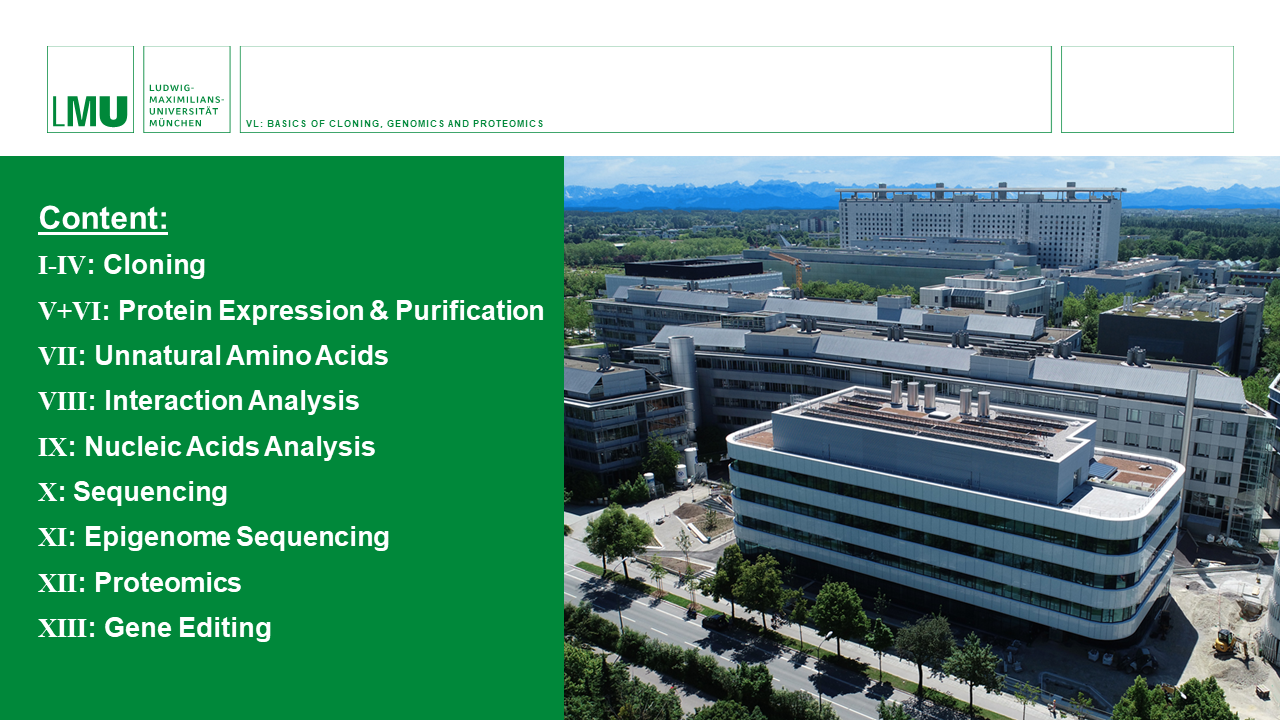- Учитель: Dino Berthold
- Учитель: Fumito Saito
- Учитель: Dirk Johrendt
- Учитель: Simon Kloß
- Учитель: Ariane Brausam
- Учитель: Ina Kellner
- Учитель: Ivan Huc
- Учитель: Dino Berthold
- Учитель: Anja Hoffmann-Röder
- Учитель: Oliver Trapp
- Учитель: Hendrik Zipse
- Учитель: Anja Hoffmann-Röder
- Учитель: Oliver Trapp
- Учитель: Hendrik Zipse

- Учитель: Thomas Carell
- Учитель: Pascal Giehr
- Учитель: Pavel Kielkowski
- Учитель: Markus Müller
- Учитель: Anne Schütz
- Учитель: Andrea Rentmeister
- Учитель: Martin Sumser
- Учитель: Oliver Trapp
- Учитель: Rubaba Abanti
- Учитель: Julia Gaisbauer
- Учитель: Manuel Hertwig
- Учитель: Markus Müller
- Учитель: Jahongir Nabiev
- Учитель: Corinna Sommermann
- Учитель: Andreas Wiest
The main goal of this course is to familiarize students with the organometallic approach to the modern organic synthesis. The chemistry of the most used main group organometallics will be discussed: the phenomena of organometallic bonding; structure in solid state, gas phase and solution; general methods of organometallics generation and their practical use for the organic synthesis.
- Учитель: Alexander Antonov
This course offers an introduction to the fundamentals of energy conversion processes, as well as material systems and devices used for energy conversion applications with a focus on photovoltaic energy conversion, in particular, the application of conventional and emerging semiconductors in solar cells.
- Учитель: Frédéric Laquai
- Учитель: Dina-Dana Medina-Tautz
- Учитель: Ecenaz Bilgen
- Учитель: Priyanshi Kalra
- Учитель: Don Lamb
- Учитель: Evelyn Plötz
- Учитель: Achim Hartschuh
- Учитель: Don Lamb
- Учитель: Evelyn Plötz
- Учитель: Sebastian Kläger
- Учитель: Joost Wintterlin
- Учитель: Joost Wintterlin
Electron microscopy can provide a comprehensive characterization of solid samples, including morphology, structure, composition and even electronic properties, with a resolution down to the atomic level. This overview lecture covers the major techniques of electron microscopy as well as associated spectroscopy methods. In addition, ion microscopy for imaging and material manipulation is introduced. Based on electron-sample interactions, basic optics and instrumental aspects, various imaging and spectroscopy methods are discussed with respect to properties such as resolution, sensitivity and limits.The lecture can be either given in English or German, depending on the choice of the students.
- Учитель: Markus Döblinger
This course presents selected physical properties of solids as independent units in a series of lectures. Using experimental and simulated examples, the lectures aim to convey a clear understanding of the central solid state aspects, and weekly alternates with computer exercises (Matlab, Octave, Python) under tight supervision, leading to an in-depth understanding. The content starts with kinematic near- and far-field diffraction (Fresnel,Fraunhofer) at atoms, molecules, nanoparticles and infinite solids. Electronic properties, such as the emergence of a band structure, are presented within the framework of 1D and 2D model systems. This is followed by a wave-optical treatment of of imaging in a light- and electron microscope which is exemplified using meta-materials and crystalline solids. Finally the course deals with phase retrieval based on pure diffraction experiments (Ptychography), as is widely used in, e.g., X-ray scattering, and introduces approaches to simulate multiple scattering (multislice) with low implementation effort.
- Учитель: Felix Dushimineza
- Учитель: Max Leo Leidl
- Учитель: Tizian Lorenzen
- Учитель: Knut Müller-Caspary
This course offers an introduction to electronic processes in organic and hybrid organic-inorganic materials, nowadays used in many optoelectronic devices such as light-emitting diodes (LEDs), photovoltaic (PV) cells, and photodetectors. First, the theoretical basics of electronic transitions and excited state dynamics are discussed, specifically: emission spectra of single molecules, molecular aggregates, and bulk samples as well as concepts of energy transfer, charge transport, and photophysical processes in conjugated polymers and organic and hybrid photovoltaic devices. Furthermore, the course offers an introduction to the most common steady-state and time-resolved (transient) all-optical and electro-optical spectroscopy techniques and analysis and interpretation of experimental data from different spectroscopy techniques. Finally, modeling of excited state dynamics using different software tools, for instance multivariate curve resolution analysis of complex spectroscopic data consisting of several components are discussed.
- Учитель: Frédéric Laquai
- Учитель: Benjamin Fingerhut
- Учитель: Martin Peschel
